#1859-1891 french
Photo

Claude Monet
Claude Monet (1840-1926) was a French impressionist painter who transformed modern art with his emphasis on light brushstrokes, bright colours, and uncluttered nature. Famed for his landscapes and series of paintings that captured the same view in different momentary atmospheric conditions, Monet is heralded as one of the greatest and most influential artists of all time.
Early Life
Oscar-Claude Monet was born in Paris on 14 November 1840. The job of Monet's father, Claude-Adolphe, is not known except that it was a humble one and that the family often struggled financially. In 1845, the Monets moved to Le Havre on the northern coast of France where Claude-Adolphe worked in his brother-in-law's thriving wholesale grocery business. Oscar-Claude's favourite subject at school was art, and, fascinated by the boats in the busy harbour, he often sketched them. From 15, he made money by selling caricatures, some of which were displayed in a local shop window each Sunday, which became a minor local attraction. Monet's aunt, Marie-Jeanne Lecadre, was an amateur painter and she encouraged Oscar-Claude, introducing him to the artist Amand Gautier (1825-1894).
Another artistic influence was the landscape painter Eugène Boudin (1824-1898) and the pair went painting together en plein air (outdoors), as opposed to the traditional method of painting in the studio. Still only 17, Monet produced his first outdoor painting, View from Rouelles, in 1858. Monet later described the experience:
Boudin put up his easel and set to work…for me it was like the rending of a veil; I understood; I grasped what painting could be…my destiny as a painter opened up before me. If I have indeed become a painter; I owe it to Eugène Boudin…Gradually my eyes were opened and I understood nature.
(Hodge, 15)
In April 1859, Monet gathered together his savings from his caricatures sales and went to study art in Paris. He enrolled in the unconventional Académie Suisse and started to make friends with artists like Camille Pissarro (1830-1903) and Paul Cézanne (1839-1906). More caricatures helped eke out his savings.
In June 1861, Monet's studies were rudely interrupted by conscription into the French army. Joining the African Light Cavalry, he was shipped off to Algeria. The bright colours of North Africa left a lasting impression on the young artist, who continued to sketch when he could. Then, after contracting typhoid in 1862, Monet was invalided back home. Six months later, Aunt Marie-Jeanne bought her nephew out of the army. Now 22, he dropped the Oscar from his name and began to paint again. It was at Le Havre that Monet met the Dutch artist Johan Barthold Jongkind (1819-1891), whose work he already admired for its broad and bold brushstrokes and which captured effects of the weather on seascapes. As Monet noted, Jongkind "became from this moment, my true master; and it is to him that I owe the final development of my painter's eye" (Hodge, 19).
Continue reading...
54 notes
·
View notes
Text

Henry Ossawa Tanner (June 21, 1859 – May 25, 1937) was an American artist who spent much of his career in France. He became the first African-American painter to gain international acclaim.[1] Tanner moved to Paris, France, in 1891 to study at the Académie Julian and gained acclaim in French artistic circles. His painting Daniel in the Lions' Den (1895, location unknown) was accepted into the 1896 Salon, the official art exhibition of the Académie des Beaux-Arts in Paris. Tanner's Resurrection of Lazarus (1896, Musée d'Orsay, Paris) was purchased by the French government after winning the third-place medal at the 1897 Salon. In 1923, the French government elected Tanner chevalier of the Legion of Honor.
#black history#black tumblr#black literature#black excellence#black community#american artist#painter
151 notes
·
View notes
Photo
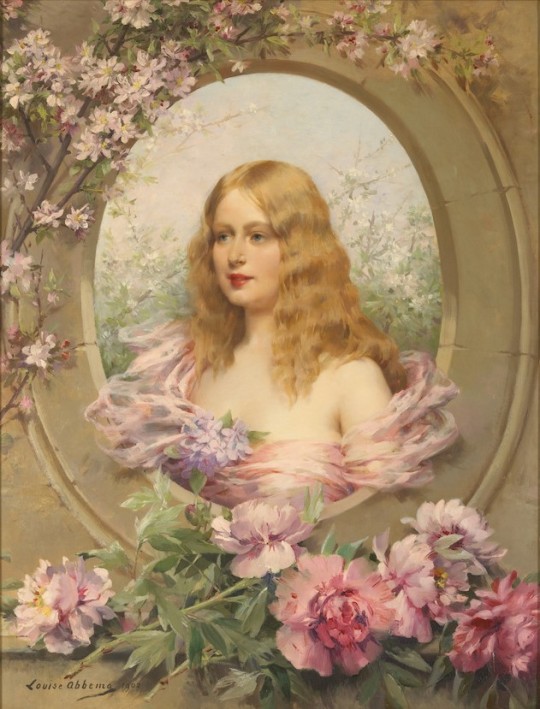


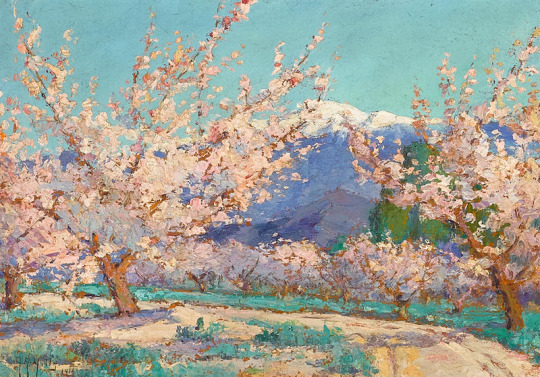
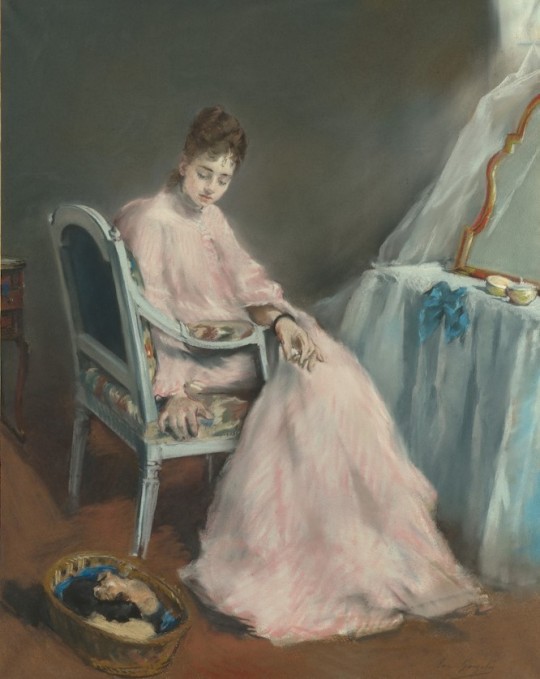
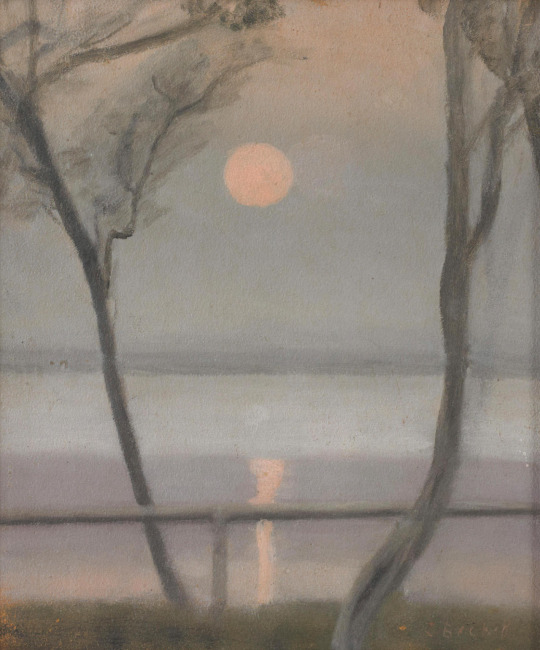

Here are the most popular paintings on this blog for 2022:
Louise Abbéma (French, 1853-1927): Allegory of Spring (1902)
Maria Fedorova (Russian, 1859 - 1934): Memory
Dorrit Black (Australian, 1891 - 1951): Corner of the garden (c. 1936)
Anna Althea Hills (American, 1882 - 1930): Springtime, Almond Trees, Banning, California (1916)
Eva Gonzalès (French, 1849 1883): Pink morning (1874)
Clarice Beckett (Australian, 1887 - 1935): Moonlight and Calm Sea (1931)
Marie Müller (Austrian, 1847 - 1935): Portrait of an Egyptian Woman with Tanbura
170 notes
·
View notes
Text
Alfred Dreyfus
A French artillery officer of Jewish ancestry from Alsace
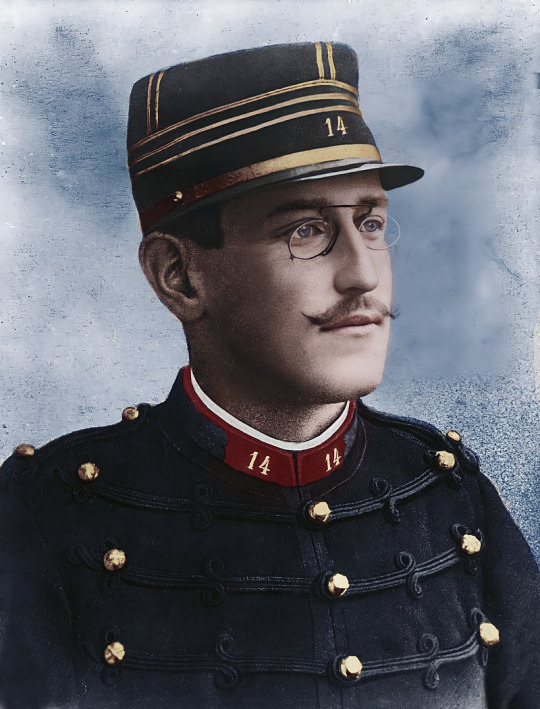
Alfred Dreyfus was a French artillery officer of Jewish ancestry from Alsace whose trial and conviction in 1894 on charges of treason became one of the most polarizing political dramas in modern French history. The incident has gone down in history as the Dreyfus affair, the reverberations from which were felt throughout Europe. It ultimately ended with Dreyfus' complete exoneration.
Born: October 9, 1859, Mulhouse
Died: July 12, 1935, Paris
Children: Pierre Dreyfus, Jeanne Dreyfus
Spouse: Lucie Dreyfus (m. 1891–1935)
Place of burial: Montparnasse Cemetery, Paris
Parents: Raphael Dreyfus, Jeannette Dreyfus
Dreyfus affair
Dreyfus affair, political crisis, beginning in 1894 and continuing through 1906, in France during the Third Republic. The controversy centred on the question of the guilt or innocence of army captain Alfred Dreyfus, who had been convicted of treason for allegedly selling military secrets to the Germans in December 1894. At first the public supported the conviction; it was willing to believe in the guilt of Dreyfus, who was Jewish. Much of the early publicity surrounding the case came from anti-Semitic groups (especially the newspaper La Libre Parole, edited by Édouard Drumont), to whom Dreyfus symbolized the supposed disloyalty of French Jews.
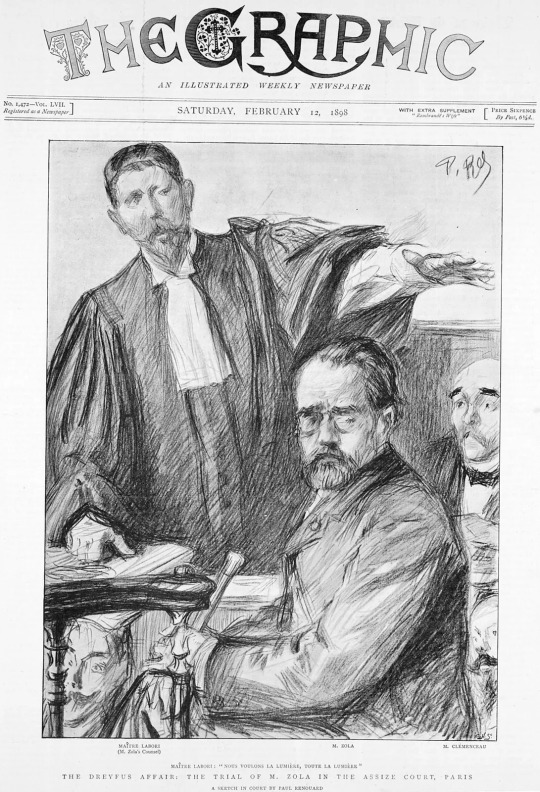
Zola, Émile: Newspaper depiction of Émile Zola in court during his trial for defamation of the French military, 1898.
The effort to reverse the sentence was at first limited to members of the Dreyfus family, but, as evidence pointing to the guilt of another French officer, Ferdinand Walsin-Esterhazy, came to light from 1896, the pro-Dreyfus side slowly gained adherents (among them journalists Joseph Reinach and Georges Clemenceau—the future World War I premier—and a senator, Auguste Scheurer-Kestner). The accusations against Esterhazy resulted in a court-martial that acquitted him of treason (January 1898). To protest against the verdict, the novelist Émile Zola wrote a letter titled “J’accuse,” published in Clemenceau’s newspaper L’Aurore. In it he attacked the army for covering up its mistaken conviction of Dreyfus, an action for which Zola was found guilty of libel.

The second court-martial of Alfred Dreyfus, illustration from Vanity Fair, Nov. 23, 1899.
By the time of the Zola letter, the Dreyfus case had attracted widespread public attention and had split France into two opposing camps. The anti-Dreyfusards (those against reopening the case) viewed the controversy as an attempt by the nation’s enemies to discredit the army and weaken France. The Dreyfusards (those seeking exoneration of Captain Dreyfus) saw the issue as the principle of the freedom of the individual subordinated to that of national security. They wanted to republicanize the army and put it under parliamentary control.

Front page of the newspaper L'Aurore, January 13, 1898, with the open letter “J'accuse” written by Émile Zola about the Dreyfus affair....(more) -From L'Aurore, January 13, 1898
From 1898 to 1899 the Dreyfusard cause gained in strength. In August 1898 an important document implicating Dreyfus was found to be a forgery. After Maj. Hubert-Joseph Henry of the intelligence section confessed to fabricating the document in order to strengthen the army’s position, revision was made almost certain. At the same time, the affair was becoming a question of vital concern to politicians. The republican parties in the Chamber of Deputies recognized that the increasingly vocal nationalist right posed a threat to the parliamentary regime. Led by the Radicals, a left-wing coalition was formed. In response to continuing disorders and demonstrations, a cabinet headed by the Radical René Waldeck-Rousseau was set up in June 1899 with the express purpose of defending the republic and with the hope of settling the judicial side of the Dreyfus case as soon as possible. When a new court-martial, held at Rennes, found Dreyfus guilty in September 1899, the president of the republic, in order to resolve the issue, pardoned him. In July 1906 a civilian court of appeals (the Cour d’Appel) set aside the judgment of the Rennes court and rehabilitated Dreyfus. The army, however, did not publicly declare his innocence until 1995.

Anti-Semitic caricature: Caricature from the anti-Semitic Viennese magazine Kikeriki. Its caption reads: “In the Dreyfus Affair, the more that is exposed, the more Judah is embarrassed.”...(more) © United States Holocaust Memorial Museum
With the Dreyfusards in the ascendant, the affair marked the start of a new phase in the history of the Third Republic, a phase in which a series of Radical-led governments pursued an anticlerical policy that culminated in the formal separation of church and state (1905). By intensifying antagonisms between right and left and by forcing individuals to choose sides, the case made a lasting impact on the consciousness of the French nation.
Félix Faure | French Republic, Politics, Legacy | Britannica
In 1894, this made the French Army's counter-intelligence section, led by Lieutenant Colonel Jean Sandherr, aware that information regarding new artillery parts was being passed to Maximilian von Schwartzkoppen, the German military attache in Paris, by a highly placed spy most likely on the General Staff. Suspicion quickly fell upon Dreyfus, who was arrested for treason on 15 October 1894.
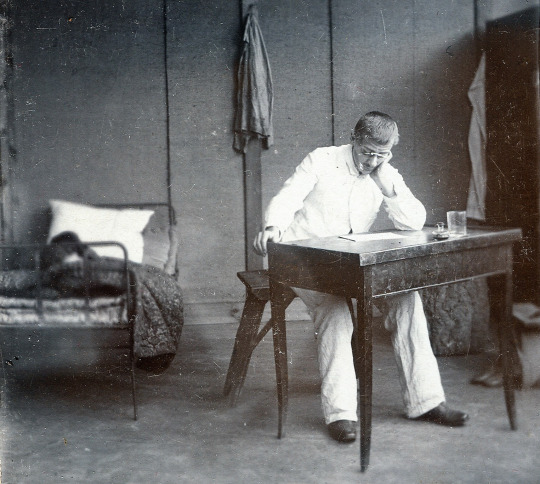
Alfred Dreyfus in his room on Devil's Island in 1898, stereoscopy sold by F. Hamel, Altona-Hamburg…; collection Fritz Lachmund
On 5 January 1895, Dreyfus was summarily convicted in a secret court martial, publicly stripped of his army rank, and sentenced to life imprisonment on Devil's Island in French Guiana. Following French military custom of the time, Dreyfus was formally degraded (cashiered) by having the rank insignia, buttons and braid cut from his uniform and his sword broken, all in the courtyard of the École Militaire before silent ranks of soldiers, while a large crowd of onlookers shouted abuse from behind railings. Dreyfus cried out: "I swear that I am innocent. I remain worthy of serving in the Army. Long live France! Long live the Army!...Continue
The affair ultimately ended with Dreyfus' complete exoneration.
Dreyfus died in Paris aged 75, on 12 July 1935, exactly 29 years after his exoneration.
Alfred Dreyfus - Wikipedia
8 notes
·
View notes
Text


Napoleon in 1814
Jean Louis Ernest Meissonier (French, 1815 - 1891)
1862
After accompanying the French army in the Austro-Italian War of 1859, Meissionier abandoned the small, Dutch 17th-century genre subjects for which he had become known and turned with even greater success to depicting events in the career of Napoleon I. In this small painting commissioned by the subject's nephew, Prince Napoleon, the emperor is portrayed in a forbidding landscape just after his last, hard-won victory in the 1814 French campaign that was fought at Arcis-sur-Aube, near Troyes: 23,000 French troops withstood the onslaught of 90,000 Austrians, but were unable to capitalize on their victory.
Source: Walters Art Museum
#napoleon#napoleon bonaparte#1814#Jean Louis Ernest Meissonier#Meissonier#napoleonic#napoleonic era#19th century#french empire#first french empire#French#France#art#horse#military#military uniform#battle#genre#genre painting#battle scene#battle painting#19th century art#European art#European#history#historical#historical art#napoleonic wars#pretty#horses
50 notes
·
View notes
Text

Anna Ancher (Danish painter) 1859 - 1935
Wife with a child sitting in front of tailor Uggerholt's house, 1889
aka Skagenskone med den lille Helga Ancher på skødet i solskin foran et hvidkalket hus (A woman from Skagen sitting with the infant Helga Ancher in front of a white house), 1889
pastel
50 x 63 cm. (19.69 x 24.8 in.)
signed A. Ancher 89
Skagens Museum, Skagen, Denmark
© photo Bruun Rasmussen
The pastel was made by Anna Ancher after a stay in Paris, and although the motif is entirely Skagen, the work perhaps also bears a little touch of the southern sun and inspiration from the French Impressionists.
* * *
Anna Kirstine Brøndum was born in Skagen, Denmark the daughter of Erik Andersen Brøndum (1820–1890) and Ane Hedvig Møller (1826-1916). She was the only one of the Skagen Painters who was actually born and grew up in Skagen where her father owned the Brøndums Hotel. The artistic talent of Anna Ancher became obvious at an early age and she grew acquainted with pictorial art via the many artists who settled to paint in Skagen, in north of Jutland.
While she studied drawing for three years at the Vilhelm Kyhn College of Painting in Copenhagen, she developed her own style and was a pioneer in observing the interplay of different colours in natural light. She also studied drawing in Paris at the atelier of Pierre Puvis de Chavannes along with Marie Triepcke, who would marry Peder Severin Krøyer, another Skagen painter. In 1880 she married fellow painter Michael Ancher, whom she met in Skagen. They had one daughter, Helga Ancher. Despite pressure from society that married women should devote themselves to household duties, she continued painting after marriage.
Anna Ancher is considered to be one of the great Danish pictorial artists by virtue of her abilities as a character painter and colourist.Her art found its expression in Nordic art's modern breakthrough towards a more truthful depiction of reality, e.g. in Blue Ane (1882) and The Girl in the Kitchen (1883–1886).
Ancher preferred to paint interiors and simple themes from the everyday lives of the Skagen people, especially fishermen, women and children. She was intensely preoccupied with exploring light and colour, as in Interior with Clematis (1913). She also created more complex compositions such as A Funeral (1891). Anna Ancher's works have often represented Danish art abroad. She was awarded the Ingenio et Arti medal in 1913 and the Tagea Brandt Rejselegat in 1924.
6 notes
·
View notes
Text

Georges Seurat (French, Paris 1859–1891 Paris), A Man Leaning on a Parapet, ca. 1881. Oil on wood.
Courtesy Alain Truong
32 notes
·
View notes
Text
Best English Poets of All Time- English Literature
Best English Poets of All Time- English Literature
The Best English Poets of All Time in english literature. people just know the poet death & birth and literary works.
William Shakespeare (1564 – 1616) English poet and playwright. Famous plays include Macbeth, Romeo and Juliet, Merchant of Venice and Hamlet. Shakespeare is widely considered the seminal writer of the English language.
Jonathan Swift (1667 – 1745) Anglo-Irish writer born in Dublin. Swift was a prominent satirist, essayist and author. Notable works include Gulliver’s Travels (1726), A Modest Proposal and A Tale of a Tub.
Samuel Johnson (1709 – 1784) Britishauthor best known for his compilation of the English dictionary. Although not the first attempt at a dictionary, it was widely considered to be the most comprehensive – setting the standard for later dictionaries.
Johann Wolfgang von Goethe (1749 – 1832) German poet, playwright, and author. Notable works of Goethe include: Faust, Wilhelm Meister’s Apprenticeship and Elective Affinities.
Jane Austen (1775 – 1817) English author who wrote romantic fiction combined with social realism. Her novels include: Sense and Sensibility (1811), Pride and Prejudice (1813) and Emma (1816).
Honore de Balzac (1799 – 1850) French novelist and short story writer. Balzac was an influential realist writer who created characters of moral ambiguity – often based on his own real life examples. His greatest work was the collection of short stories La Comédie humaine.
Alexandre Dumas (1802 – 1870) French author of historical dramas, including – The Count of Monte Cristo (1844), and The Three Musketeers (1844). Also prolific author of magazine articles, pamphlets and travel books.
Victor Hugo (1802 – 1885) French author and poet. Hugo’s novels include Les Misérables, (1862) and Notre-Dame de Paris (1831).
Charles Dickens (1812 – 1870) – English writer and social critic. His best-known works include novels such as Oliver Twist, David Copperfield and A Christmas Carol.
Charlotte Bronte (1816 – 1855) English novelist and poet, from Haworth. Her best known novel is ‘Jane Eyre’ (1847).
Henry David Thoreau (1817 – 1862) – American poet, writer and leading member of the Transcendentalist movement. Thoreau’s “Walden” (1854) was a unique account of living close to nature.
Emily Bronte (1818 – 1848) English novelist. Emily Bronte is best known for her novel Wuthering Heights (1847), and her poetry.
George Eliot (1819 – 1880) Pen name of Mary Ann Evans. Wrote novels, The Mill on the Floss (1860), Silas Marner (1861), Middlemarch (1871–72), and Daniel Deronda (1876)
Leo Tolstoy (1828 – 1910) Russian novelist and moral philosopher. Famous works include the epic novels – War and Peace (1869) and Anna Karenina (1877). Tolstoy also became an influential philosopher with his brand of Christian pacificism.
Fyodor Dostoevsky (1821-1881) Russian novelist, journalist and philosopher. Notable works include Notes from Underground, Crime and Punishment and The Idiot
Lewis Carroll (1832-1898) Oxford mathematician and author. Famous for Alice in Wonderland, Through the Looking Glass, and poems like The Snark.
Mark Twain (1835 – 1910) American writer and humorist, considered the ‘father of American literature’. Famous works include The Adventures of Tom Sawyer (1876) and Adventures of Huckleberry Finn (1885).
Thomas Hardy (1840-1928) English novelist and poet. Hardy was a Victorian realist who was influenced by Romanticism. He wrote about problems of Victorian society – in particular, declining rural life. Notable works include: Far from the Madding Crowd (1874), Tess of the d’Urbervilles (1891), andJude the Obscure (1895).
Oscar Wilde (1854 – 1900) – Irish writer and poet. Wilde wrote humorous, satirical plays, such as ‘The Importance of Being Earnest‘ and ‘The Picture of Dorian Grey’.
Kenneth Graham (1859 – 1932) Author of the Wind in the Willows (1908), a classic of children’s literature.
George Bernard Shaw (1856 – 1950) Irish playwright and wit. Famous works include: Pygmalion (1912), Man and Superman (1903) and Back to Methuselah (1921)
Sir Arthur Conan Doyle (1859 – 1930) British author of historical novels and plays. Most famous for his short stories about the detective – Sherlock Holmes, such as The Hound of the Baskervilles (1902) and Sign of Four (1890).
Beatrix Potter (1866 – 1943) English conservationist and author of imaginative children’s books, such as the Tales of Peter Rabbit (1902).
Marcel Proust (1871 – 1922) French author. Best known for epic novel l À la recherche du temps perdu (In Search of Lost Time) published in seven parts between 1913 and 1927.
William Somerset Maugham 1874 – 1965) British novelist and writer. One of the most popular authors of 1930s. Notable works included The Moon and Sixpence (1916), The Razor’s Edge (1944), and Of Human Bondage (1915)
P.G.Wodehouse (1881 – 1975) English comic writer. Best known for his humorous and satirical stories about the English upper classes, such as Jeeves and Wooster and Blandings Castle.
Virginia Woolf (1882 – 1941) English modernist writer, a member of the Bloomsbury group. Famous novels include Mrs Dalloway (1925), To the Lighthouse (1927) and Orlando (1928).
James Joyce (1882 – 1941) Irish writer from Dublin. Joyce was one of most influential modernist avant-garde writers of the Twentieth Century. His novel Ulysses (1922), was ground-breaking for its stream of consciousness style. Other works include Dubliners (1914) and Finnegans Wake (1939).
D H Lawrence (1885 – 1930) English poet, novelist and writer. Best known works include Sons and Lovers, The Rainbow, Women in Love and Lady Chatterley’s Lover (1928) – which was banned for many years.
Agatha Christie (1890 – 1976) British fictional crime writer. Many of her books focused on series featuring her detectives ‘Poirot’ and Mrs Marple.
J.R.R. Tolkien (1892 – 1973) – Professor of Anglo-Saxon and English at Oxford University. Tolkien wrote the best-selling mythical trilogy The Lord of the Rings. Other works include, The Hobbit and The Silmarillion, and a translation of Beowulf.
Vera Brittain (1893 – 1970) British writer best known for her autobiography – Testament of Youth (1933) – sharing her traumatic experiences of the First World War.
F. Scott Fitzgerald (1896 – 1940) American author. Iconic writer of the ‘jazz age’. Notable works include The Great Gatsby (1925), and Tender Is the Night (1934) – cautionary tales about the ‘Jazz decade’ and the American Dream based on pleasure and materialism.
Enid Blyton (1897 – 1968) British children’s writer, known for her series of children’s books – The Famous Five and The Secret Seven. Blyton wrote an estimated 800 books over 40 years.
C.S. Lewis (1898 – 1963) Irish / English author and professor at Oxford University. Lewis is best known for The Chronicles of Narnia, a children’s fantasy series. Also well known as a Christian apologist.
Ernest Hemingway (1899 – 1961) Ground breaking modernist American writer. Famous works included For Whom The Bell Tolls (1940) and A Farewell to Arms (1929).
Vladimir Nabokov (1899 – 1977) Russian author of Lolita (1955) and Pale Fire (1962)
Barbara Cartland (1901 – 2000) One of most prolific and best selling authors of the romantic fiction genre. Some suggest she has sold over 2 billion copies worldwide.
John Steinbeck (1902 – 1968) American writer who captured the social change experienced in the US around the time of the Great Depression. Famous works include – Of Mice and Men (1937), The Grapes of Wrath (1939) and East of Eden (1952).
George Orwell (1903 – 1950) – English author. Famous works include Animal Farm, and 1984. – Both stark warnings about the dangers of totalitarian states, Orwell was also a democratic socialist who fought in the Spanish Civil War, documenting his experiences in “Homage to Catalonia” (1938).
Samuel Beckett (1906-1989) Irish avant garde, modernist writer. Beckett wrote minimalist and thought provoking plays, such as ‘Waiting for Godot’ (1953) and ‘Endgame‘ (1957). He was awarded the Nobel Prize in Literature in 1969.
Albert Camus (1913 – 1960) – French author, journalist, and philosopher. Associated with existentialism and absurdism. Famous works included The Myth of Sisyphus, The Stranger and The Plague.
Roald Dahl (1916 – 1990) English author, best known for his children’s books, such as Willy Wonka and the Chocolate Factory, James and The Giant Peach and The BFG.
Aleksandr Solzhenitsyn (1918 – 2008) Russian author, historian and political critic. Solzhenitsyn was awarded the Nobel Prize for Literature in 1970 for his work in exposing the nature of Soviet totalitarianism. e.g, The Gulag Archipelago (1965-67).
J.D. Salinger (1919 – 2010) American author. Most influential novel The Catcher in the Rye (1951). Wrote many short stories for New Yorker magazine, such as “A Perfect Day for Bananafish”
Joseph Heller (1923 – 1999) American novelist, who wrote satirical and black comedy. His most famous work is ‘Catch 22’ (1961) – a satire on the futility of war.
Gabriel Garcia Marquez (1927 – 2014) Colombian author. Wrote: One Hundred Years of Solitude (1967), The Autumn of the Patriarch (1975) and Love in the Time of Cholera (1985). Nobel Prize in Literature (1982).
Anne Frank (1929 – 1945) Dutch-Jewish diarist. Known for her diary ‘Anne Frank‘ Published posthumously by her father – recalling her life hiding from Gestapo in occupied Holland.
Salman Rushdie (1947 – ) Anglo-Indian author. His works combine elements of magic realism, satire and historical fiction – often based on Indian sub-continent. Notable works include Midnight’s Children (1981), Shame (1983) and Satanic Verses (1988).
Stephen King (1947 – ) American author of contemporary horror, supernatural fiction, suspense, science fiction, and fantasy. One of the best selling authors of modern times.
George R.R Martin (1948 – ) American author of epic fantasy series – A Song of Ice and Fire, – his international best-selling series of fantasy, adapted for the screen as a Game of Thrones.
Douglas Adams (1952 – 2001) British writer of humorous and absure science fiction. Adams wrote a best selling trilogy (of five books) The Hitchhiker’s Guide to the Galaxy – which began as a BBC play.
J.K.Rowling (1965 – ) British author of the Harry Potter Series – which has become the best selling book series of all time. Her first book was Harry Potter and thePhilosopher’s Stone (1997). Rowling has also published adult fiction, such as The Casual Vacancy (2012) and The Cuckoo’s Calling (2013)
Khaled Hosseini (1965 – ) Afghan born American writer. Notable works include: The Kite Runner (2003) A Thousand Splendid Suns (2007) And the Mountains Echoed (2013)
Homer (c. 8th Century B.C. ) Considered the greatest of the ancient Greek poets. Homer was the author of the two epic poems, The Iliad and The Odyssey.
Sappho ( c 570 BC) One of the first published female writers. Much of her poetry has been lost but her immense reputation has remained. Plato referred to Sappho as one of the great ten poets.
Virgil (70 BC – 19 BC) Roman poet. Wrote three epics Eclogues (or Bucolics), the Georgics, and the Aeneid.
Dante Alighieri (1265–1321) Italian poet of the Middle Ages. His Divine Comedy, is one of most influential European works of literature. Dante is also called the “Father of the Italian language”.
Geoffrey Chaucer (1343 – 1400) Considered the Father of English Literature. Best known for Canterbury Tales (1475).
John Milton (1608 – 1674) English poet. Best known for his epic poem Paradise Lost (1667), written in blank verse – telling the Biblical story of man’s fall. Also wrote Areopagitica (1644) in defence of free speech.
William Blake (1757 –1827) English mystic and romantic poet, wrote Songs of Innocence and Songs of Experience. Also hand-painted many of his works.
William Wordsworth (1770 – 1850) English romantic poet from Lake District, many poems related to natures, such as his Lyrical Ballads.
Samuel Taylor Coleridge (1772 – 1834) English romantic poet. Author of The Rime of the Ancient Mariner and Kublai Khan.
Percy Bysshe Shelley (1792 – 1822) English romantic poet. Famous works include Queen Mab and Prometheus Unbound
John Keats (1795 – 1821) English Romantic Poet, best known for his Odes, such as Ode to a Nightingale, Endymion.
Ralph Waldo Emerson (1803 – 1882) American Transcendentalist poet and writer.
Alfred Tennyson (1809 – 1892) Popular Victorian poet, wrote Charge of the Light Brigade, Ulysses, and In Memoriam A.H.H.
Walt Whitman (1819 – 1892) American poet. Wrote Leaves of Grass, a ground breaking new style of poetry.
Emily Dickinson (1830 – 1886) American female poet. Led secluded lifestyle, and left legacy of many short vivid poems, often on themes of death and immortality.
Rabindranath Tagore (1861 – 1941) Indian poet. Awarded Nobel Prize for Literature for his work – Gitanjali.
Robert Frost (1874 – 1963) – Influential American poet, one of most highly regarded of the Twentieth Century. Most famous work ‘The Road Not Taken’ (1916)
Maya Angelou (1928 – 2014 ) – Modern American poet and writer.
Source: Internet
3 notes
·
View notes
Text
youtube
👉 *The anti-Impressionist!
👉 ** One of my Faves! This is an easy example when someone doesn’t ‘Get’ the relationship of math, science and optics to painting; to help explain that dance.
RIP Today, Mar 29, 1891 – #GeorgesSeurat, French painter (b. 1859) walked on.
(https://en.wikipedia.org/wiki/Georges_Seurat)
0 notes
Text
Events 3.3 (before 1930)
473 – Gundobad (nephew of Ricimer) nominates Glycerius as emperor of the Western Roman Empire.
724 – Empress Genshō abdicates the throne in favor of her nephew Shōmu who becomes emperor of Japan.
1575 – Mughal Emperor Akbar defeats Sultan of Bengal Daud Khan Karrani's army at the Battle of Tukaroi.
1585 – The Olympic Theatre, designed by Andrea Palladio, is inaugurated in Vicenza.
1776 – American Revolutionary War: The first amphibious landing of the United States Marine Corps begins the Battle of Nassau.
1779 – American Revolutionary War: The Continental Army is routed at the Battle of Brier Creek near Savannah, Georgia.
1799 – The Russo-Ottoman siege of Corfu ends with the surrender of the French garrison.
1820 – The U.S. Congress passes the Missouri Compromise.
1845 – Florida is admitted as the 27th U.S. state.
1849 – The Territory of Minnesota is created.
1857 – Second Opium War: France and the United Kingdom declare war on China.
1859 – The two-day Great Slave Auction, the largest such auction in United States history, concludes.
1861 – Alexander II of Russia signs the Emancipation Manifesto, freeing serfs.
1873 – Censorship in the United States: The U.S. Congress enacts the Comstock Law, making it illegal to send any "obscene literature and articles of immoral use" through the mail.
1875 – The first ever organized indoor game of ice hockey is played in Montreal, Quebec, Canada as recorded in the Montreal Gazette.
1878 – The Russo-Turkish War ends with Bulgaria regaining its independence from the Ottoman Empire according to the Treaty of San Stefano.
1891 – Shoshone National Forest is established as the first national forest in the US and world.
1910 – Rockefeller Foundation: John D. Rockefeller Jr. announces his retirement from managing his businesses so that he can devote all his time to philanthropy.
1913 – Thousands of women march in the Woman Suffrage Procession in Washington, D.C.
1918 – Russia signs the Treaty of Brest-Litovsk, agreeing to withdraw from World War I, and conceding German control of the Baltic States, Belarus and Ukraine. It also conceded Turkish control of Ardahan, Kars and Batumi.
1924 – The 407-year-old Islamic caliphate is abolished, when Caliph Abdülmecid II of the Ottoman Caliphate is deposed. The last remnant of the old regime gives way to the reformed Turkey of Kemal Atatürk.
1924 – The Free State of Fiume is annexed by the Kingdom of Italy
0 notes
Text
History
December 2, 1804 - Napoleon Bonaparte was crowned Emperor of France by Pope Pius VII in Paris.
December 2, 1805 - Napoleon defeated Russia and Austria in the Battle of Austerlitz.
December 2, 1823 - President James Monroe introduced his "Monroe Doctrine" during his annual message to the Congress, prohibiting any further colonization of the American continents by European powers, stating, "we should consider any attempt on their part to extend their system to any portion of this hemisphere as dangerous to our peace and safety…"
December 2, 1852 - The Second Empire was proclaimed in France with Napoleon III as emperor.
December 2, 1859 - Abolitionist leader John Brown was executed for treason at Charles Town, West Virginia, following his raid on the U.S. Arsenal at Harper's Ferry.
December 2, 1942 - Physicists led by Enrico Fermi carried out the world's first successful nuclear chain reaction at the University of Chicago.
December 2, 1954 - The U.S. Senate condemned Senator Joseph McCarthy for misconduct following his ruthless investigations of thousands of alleged Communists.
December 2, 1971 - The United Arab Emirates was formed, consisting of seven Arab kingdoms on the eastern coast of the Arabian Peninsula including the former Trucial states Abu Dhabi, Dubai, Sharjah, Ajman, Umm al Qaiwain and Fujairah. Ras al-Khaimah became a member in 1972. The area has some of the world's largest reserves of petroleum and natural gas.
December 2, 1979 - Electors in Iran voted overwhelmingly in favor of a new constitution granting absolute power to Ayatollah Khomeini.
December 2, 1982 - The first permanent artificial heart was implanted in 61-year-old Barney C. Clark by Dr. William De Vries at the University of Utah Medical Center in Salt Lake City. Clark, who was near death at the time of the operation, survived 112 days after the implantation.
Birthday - French painter Georges Seurat (1859-1891) was born in Paris. He was a leader in the neo-impressionist movement of the late 19th Century.
0 notes
Text
Georges Seurat
French, 1859-1891
This week's studies are of the famous pointillism artist and French painter Geroge Pierre Seurat conte drawings. Geroge Surat was one of the first artists to use a scientific method to his drawings. Since science and art are not the same, they are experienced in diverse ways. Inspiration comes from nature, but art is always made by people, for people as an end, and not as a substitute for nature. Yet many principles of composition are based on scientific facts, on visual phenomena that an artist combines with emotional expression in composing a picture. Surat's style of art was all of this and then some. Surat's style used a lot of Egyptian and Greek Sculptures and even Italian Renaissance frescoes, although his unusual technique, simplified figure types, on an enormous scale, the monumental work is a manifesto of the style of painting that broke with Impressionism. I will post my drawings this evening.
#art#value#illustration#conte#charcoal
0 notes
Photo

Georges Seurat (French, 1859–1891)
Vase of Flowers, 1878
oil on canvas
Harvard Art Museums
1 note
·
View note
Photo

Happy Black History Month: Henry Ossawa Tanner (June 21, 1859 – May 25, 1937) - He was an American artist and the first African-American painter to gain international acclaim.Tanner moved to Paris, France, in 1891 to study at the Académie Julian and gained acclaim in French artistic circles. - If you want to learn more here's a link: https://americanart.si.edu/artist/henry-ossawa-tanner-4742 https://www.instagram.com/p/Co0GmkLp-IW/?igshid=NGJjMDIxMWI=
0 notes
Text
Formal Analysis of “A Sunday on La Grande Jatte”
Table of Contents
Introduction
Main body
Summary
Works Cited
Artist: Georges Seurat (French, Paris 1859–1891 Paris)
Title: “A Sunday on La Grande Jatte”
Movement: Neo-impressionism
Date: 1884
Medium: Oil on canvas
Dimensions: 27 3/4 x 41 in. (70.5 x 104.1 cm)
Introduction
A way of better understanding pieces of art is by observing them and drawing conclusions on certain elements used…

View On WordPress
0 notes
